The Monastery was founded in 1105 by Bishop Hovhannes and now includes the church of St. Karapet, the St. Grigor Chapel, and the Church of St. Astvatsatsin.

St. Astvatsatsin in the foreground.The original was completed in the 14th C, the roof was restored from "flat" to the now conical shape as recently as the 1990's, we were told it is heavily criticised in some quarters as being a "fantasy reconstruction".
Still pretty impressive though?
As can be seen a lot of reconstruction has taken place over the centuries
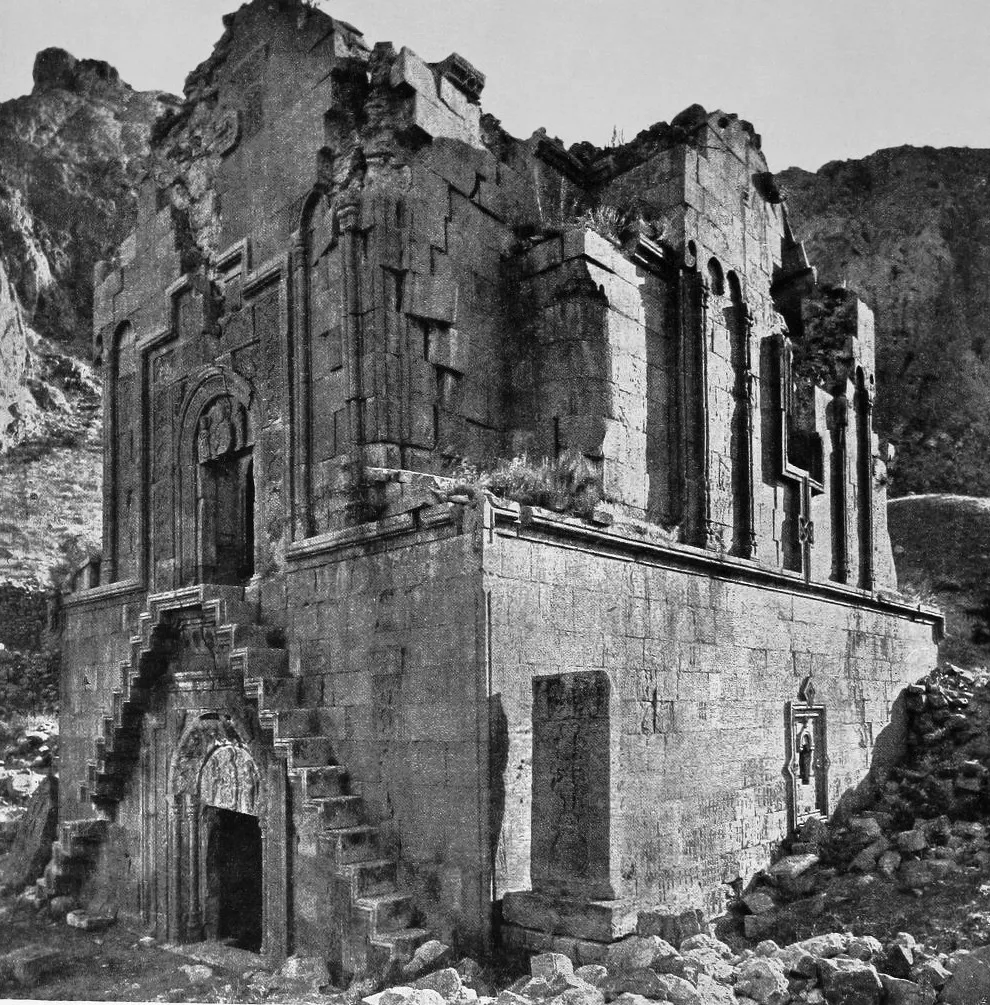
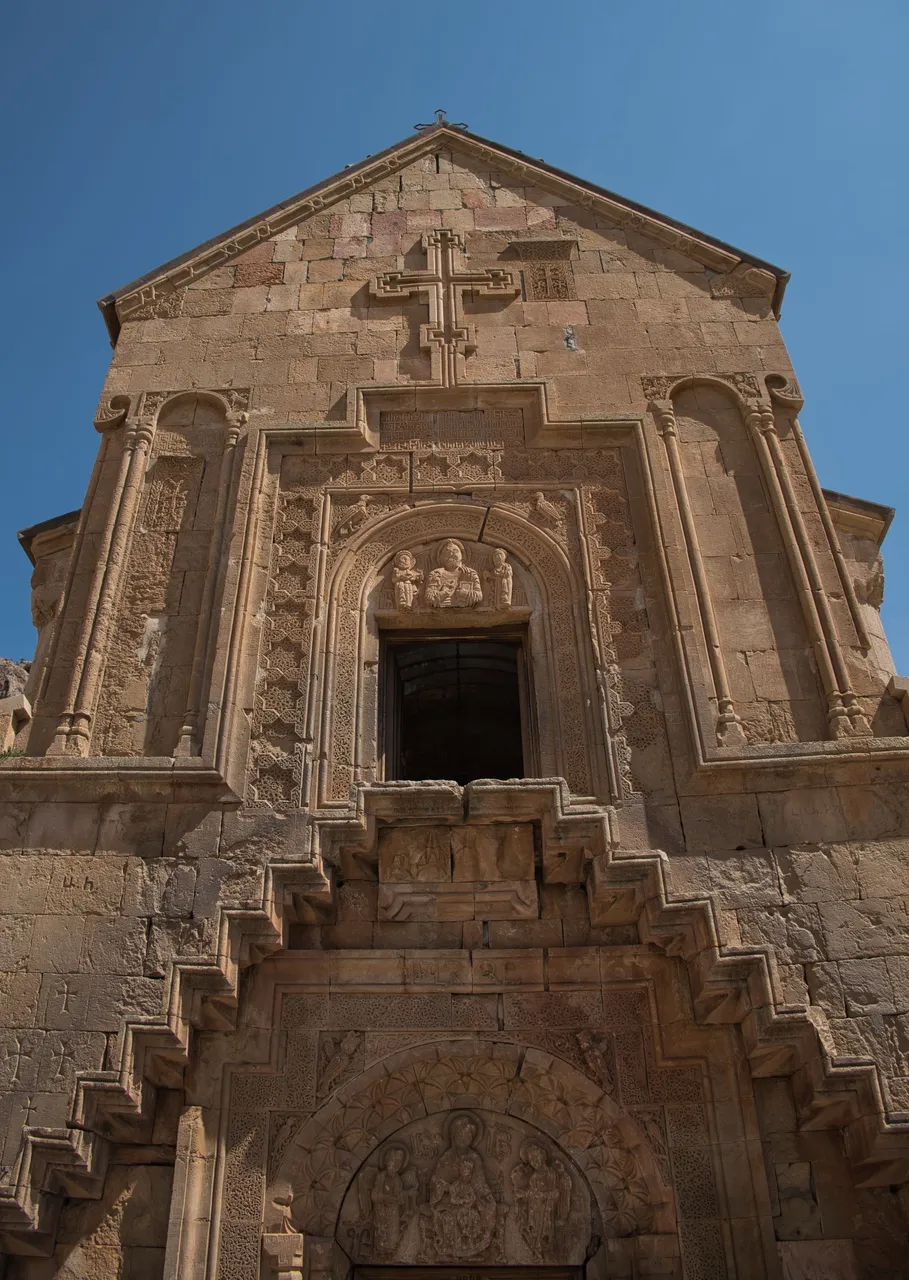
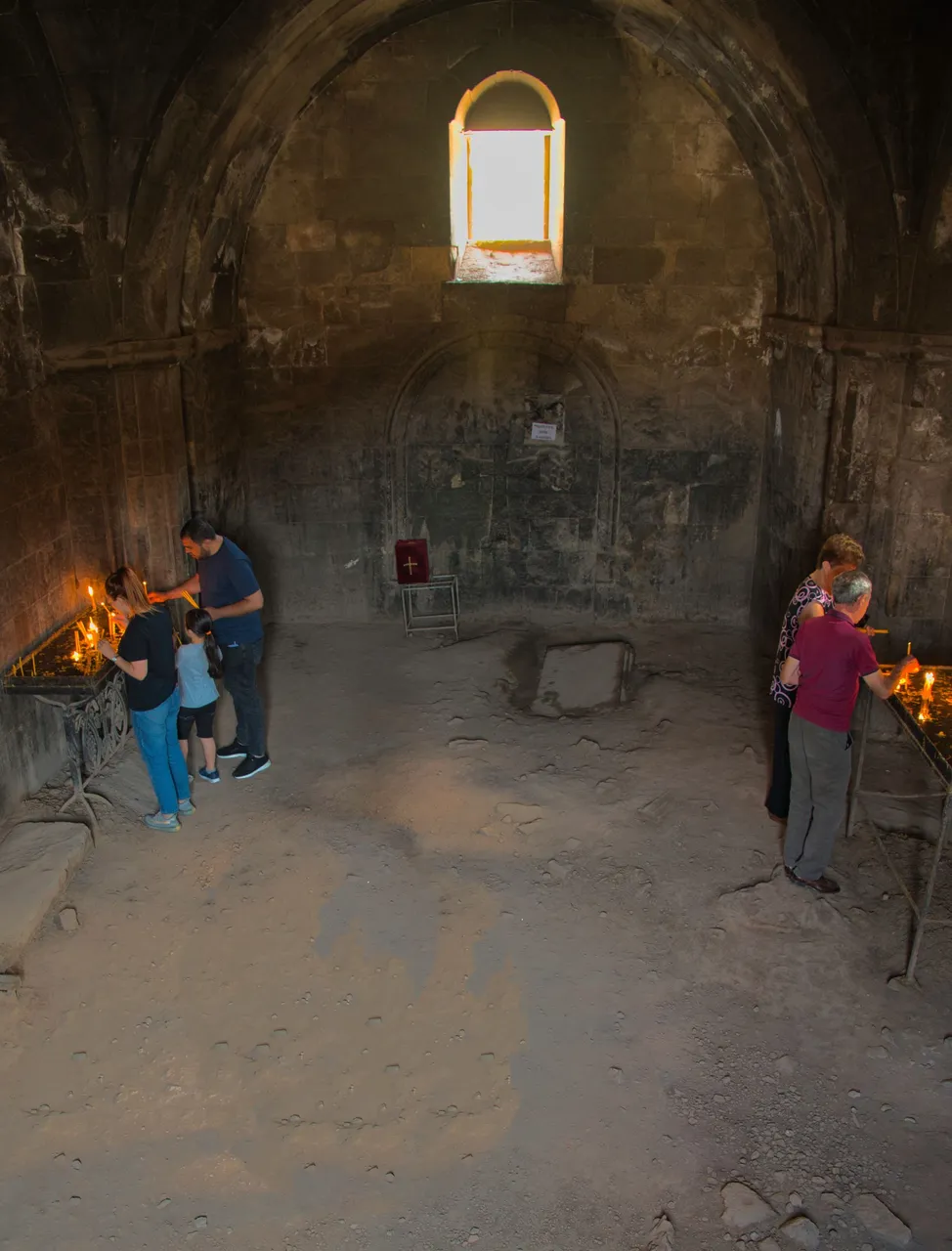
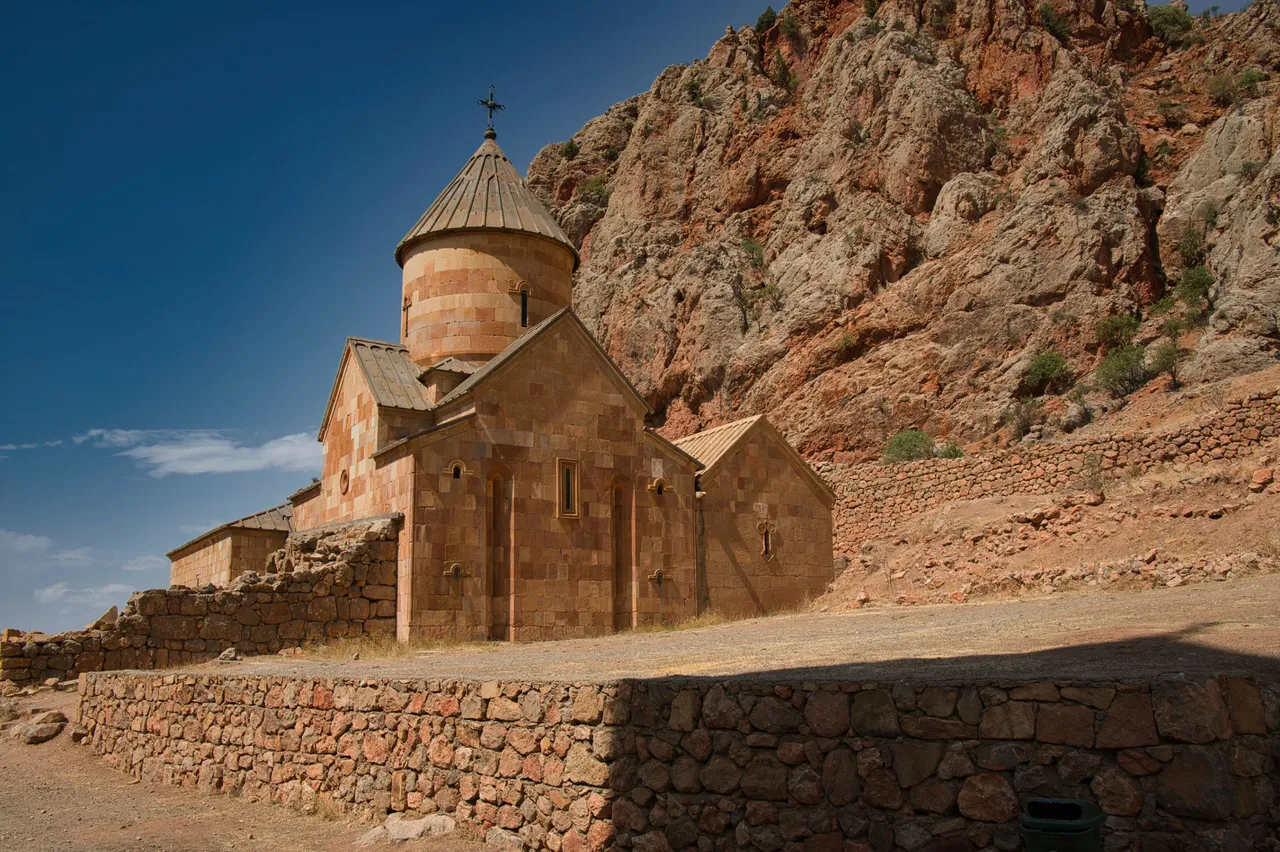
St. Karapet, built and rebuilt since the early 13th C, mainly due to earthquakes reducing it to rubble. The roof again was reconstructed as late as 1998, paid for by a private Armenian-canadian family. It also houses the chapel of St. Grigor.

Contrasting from the bright hot sunshine to the darkness and cold inside
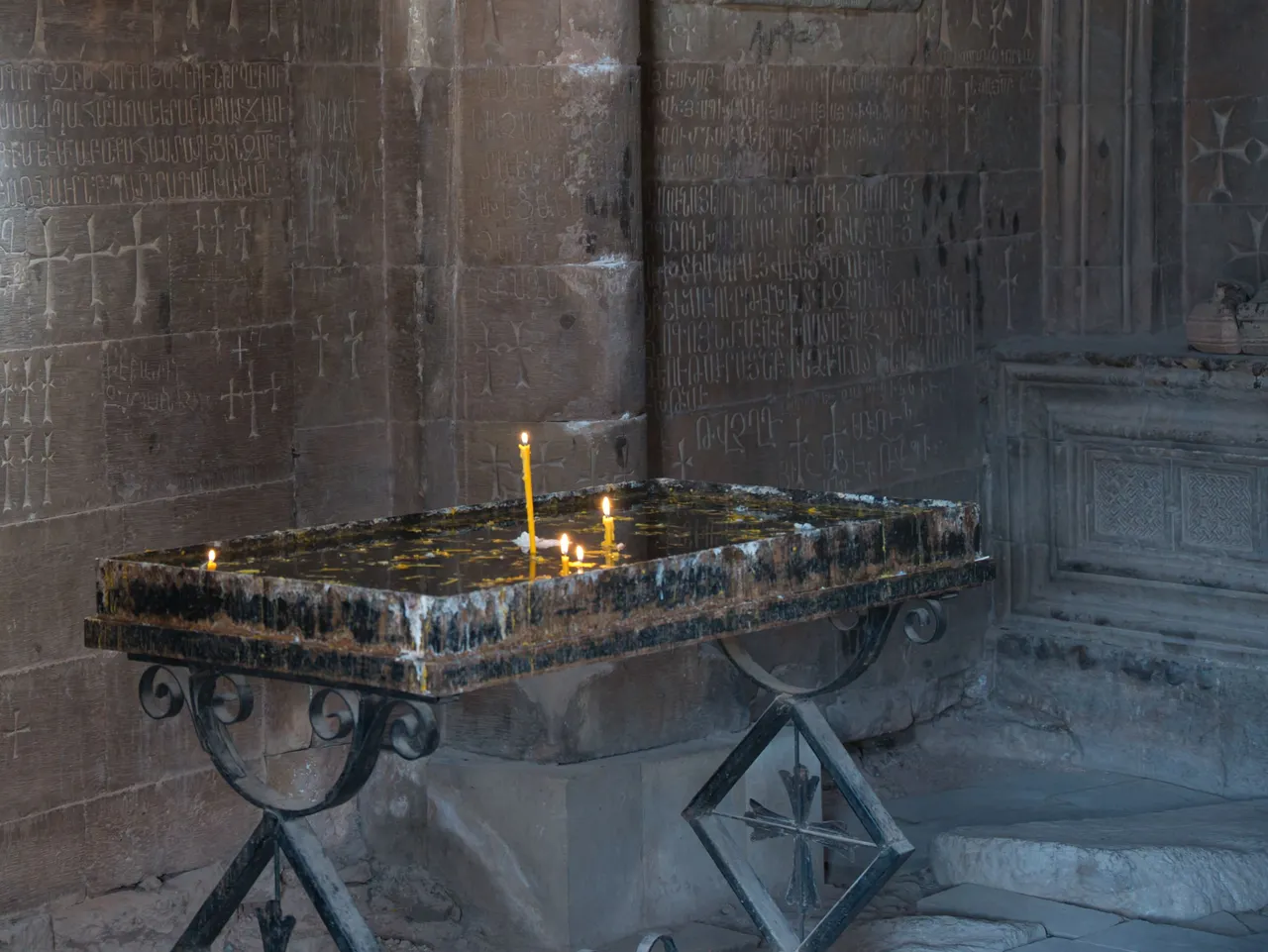
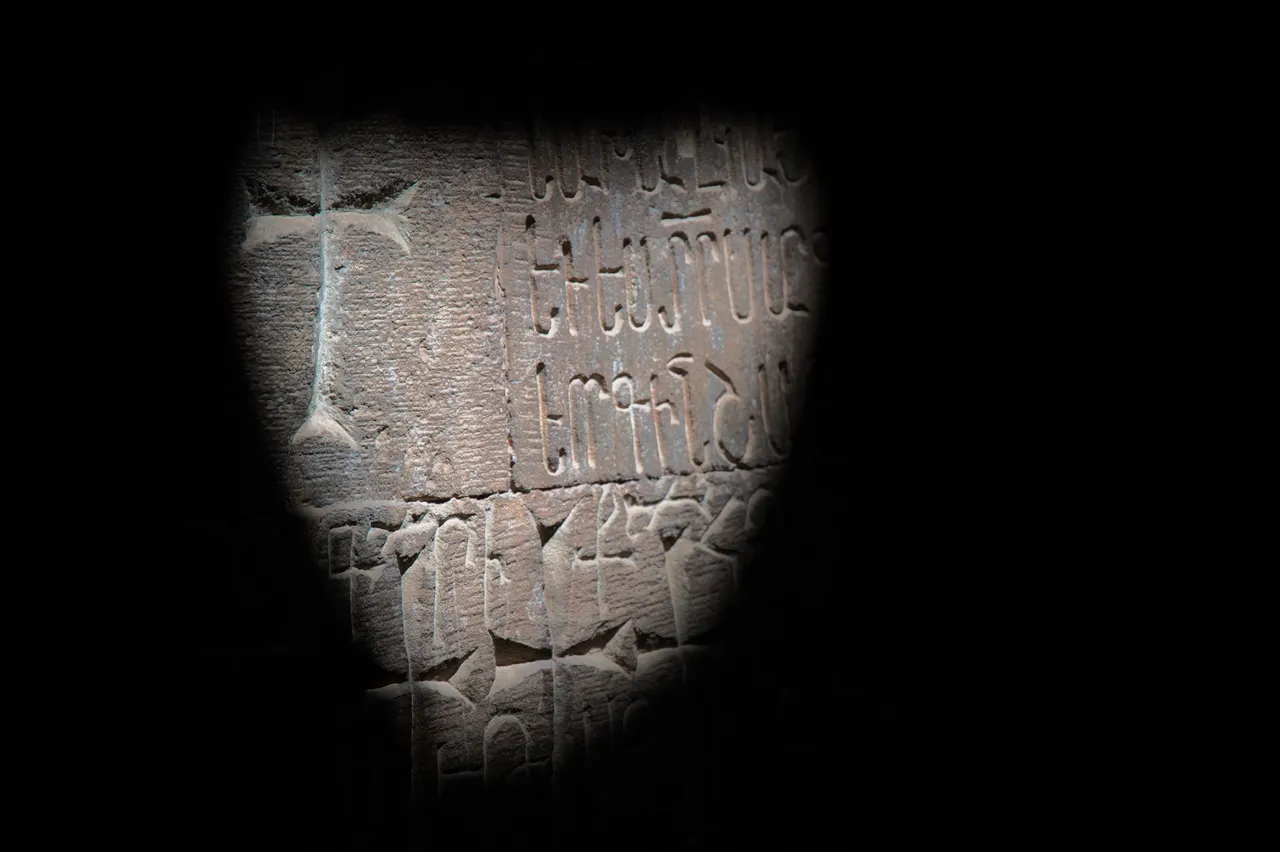
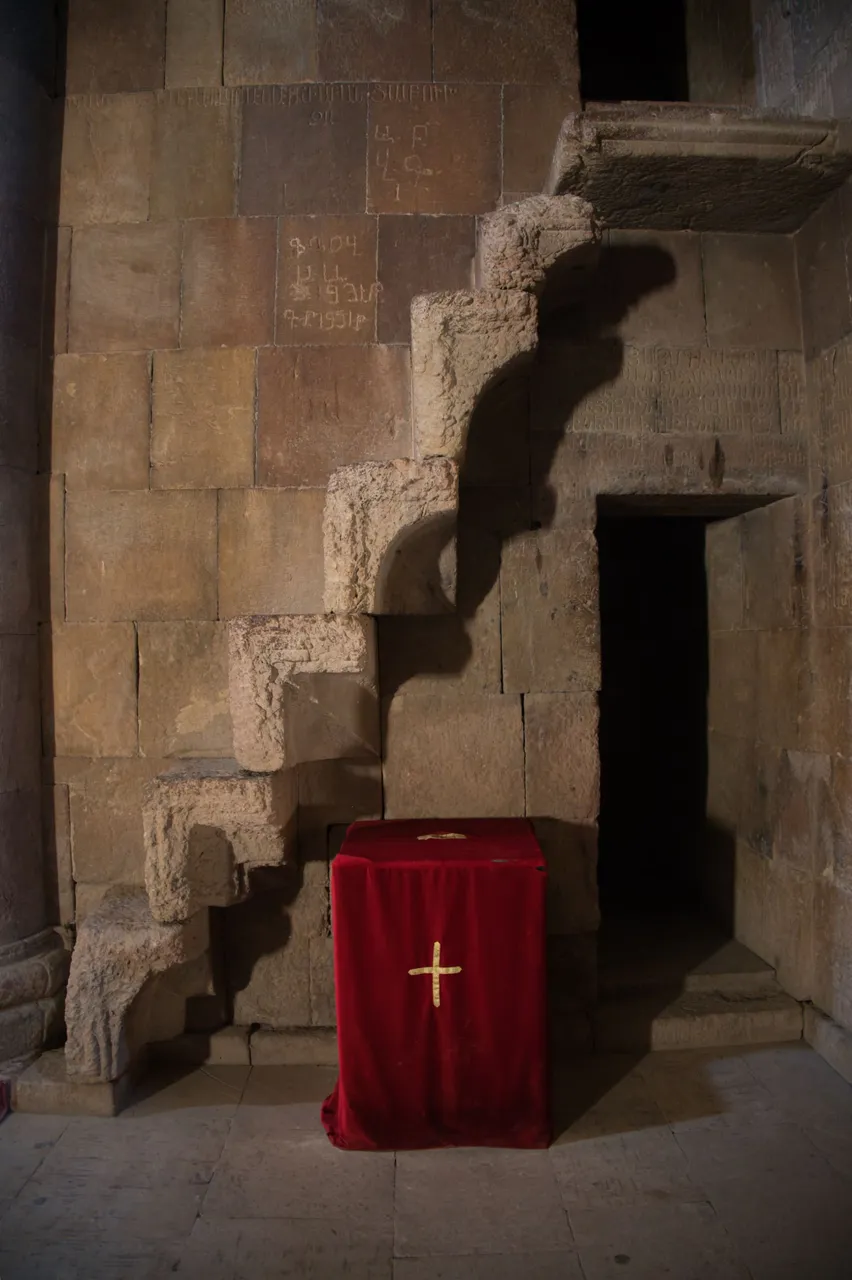
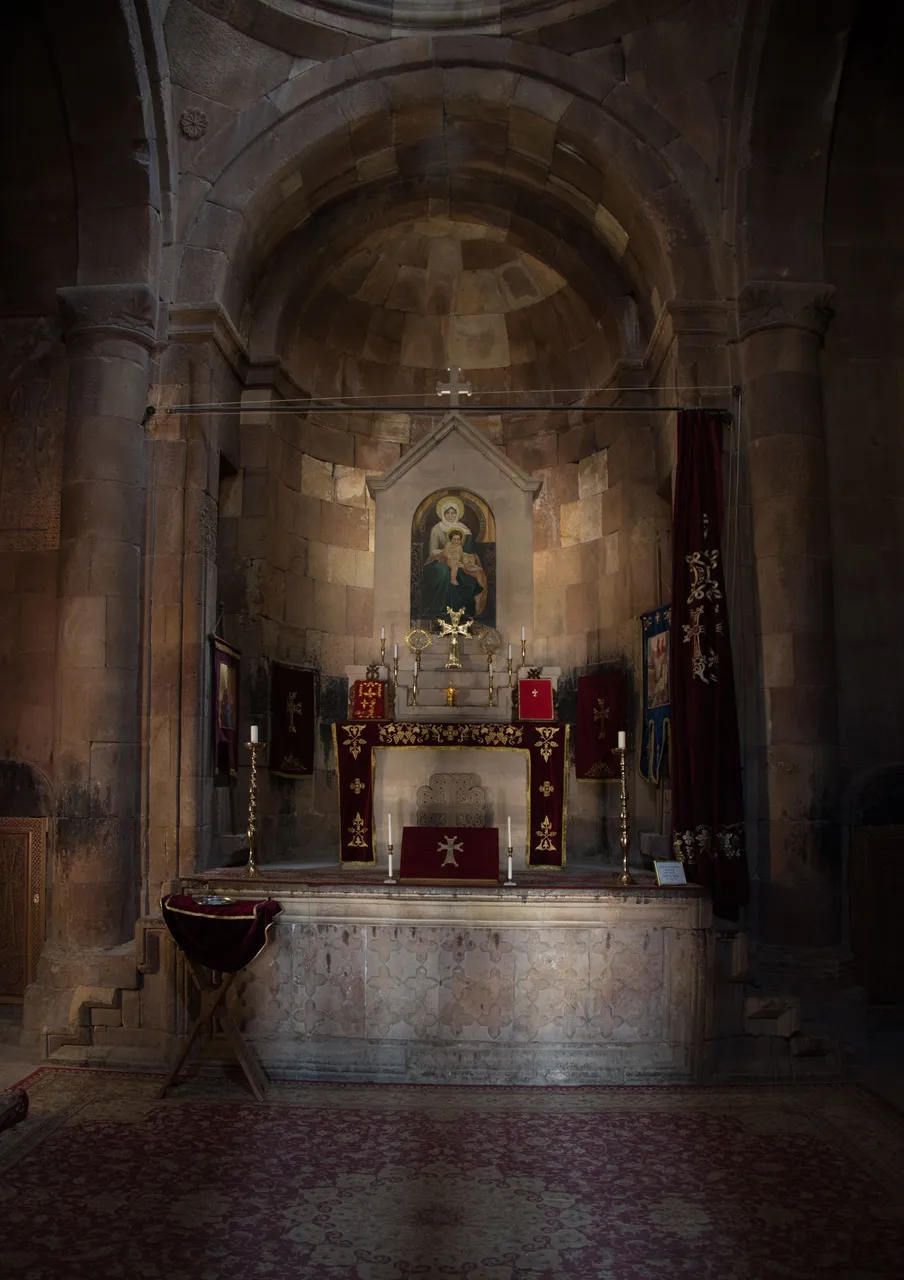
A simple altar
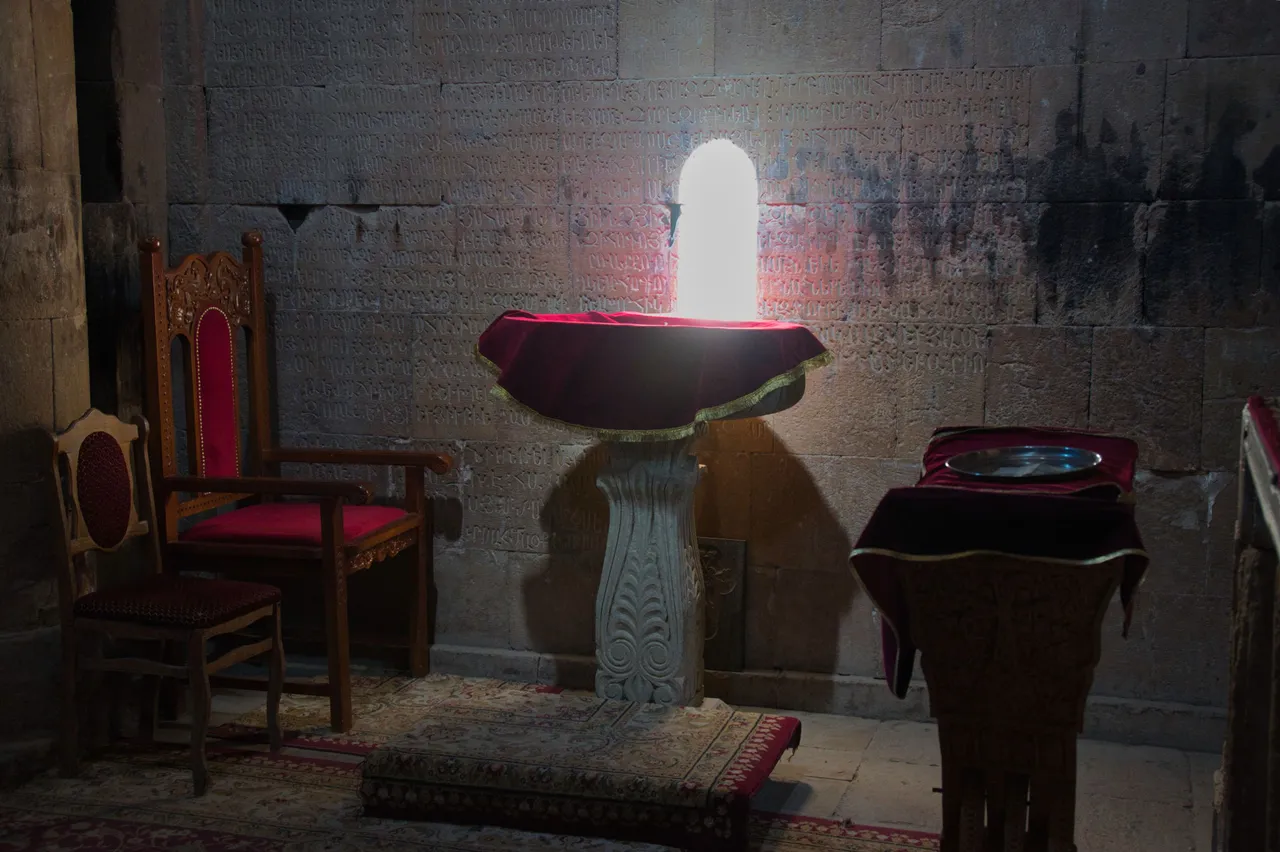

It also houses the gravestones (allegedly) of Prince Orbelian and his family, former or residents of Noravank.
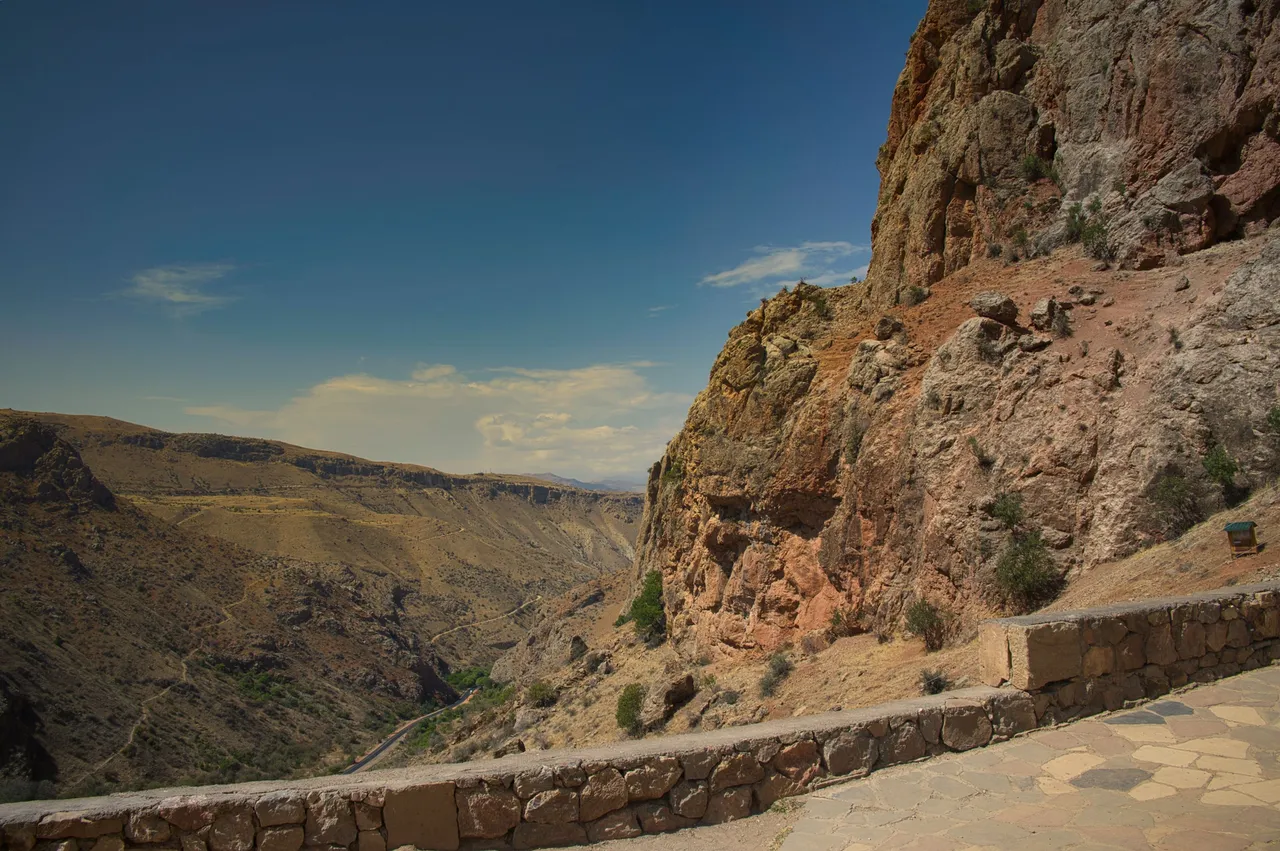
Some magnificent views of the narrow winding gorge of the Amaghu River
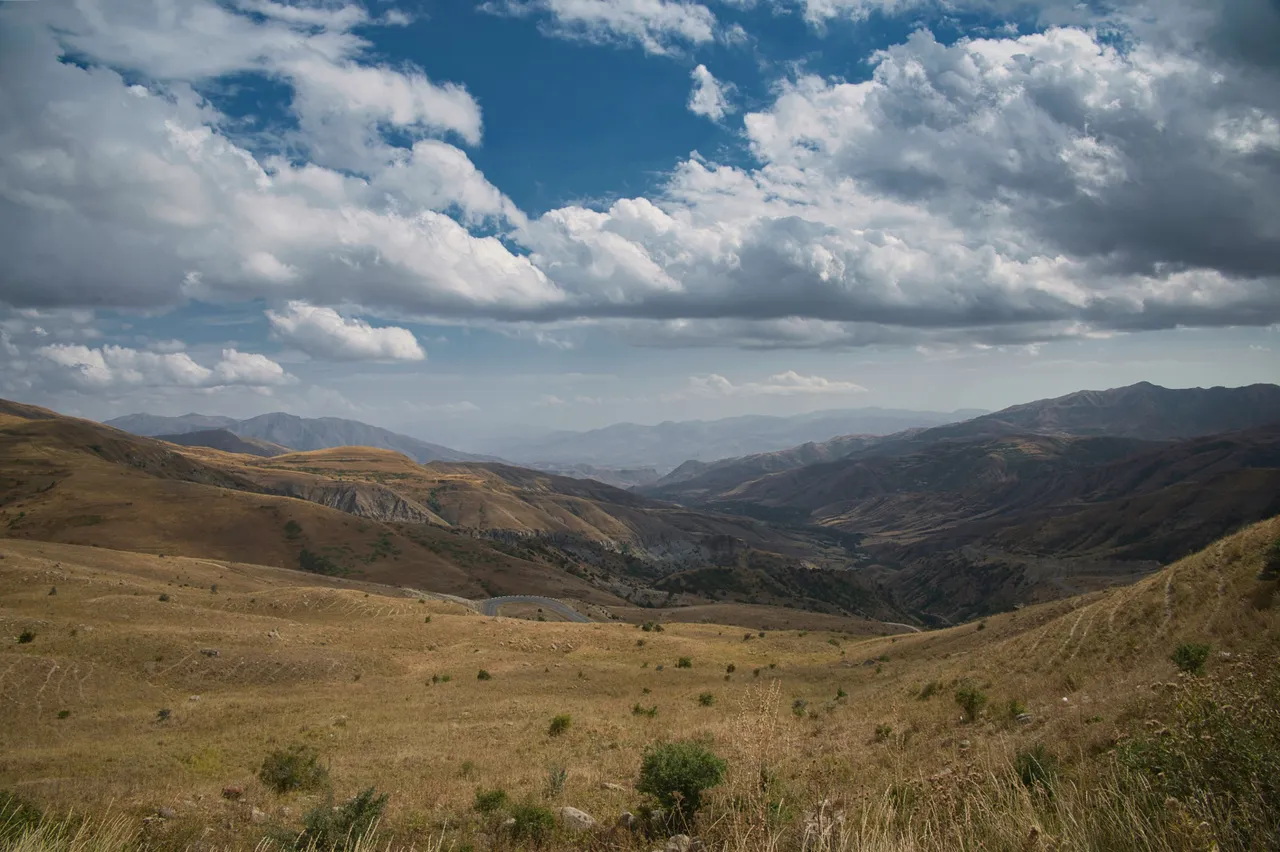
To say that the location and setting was breathtaking is an understatement of humongous proportions
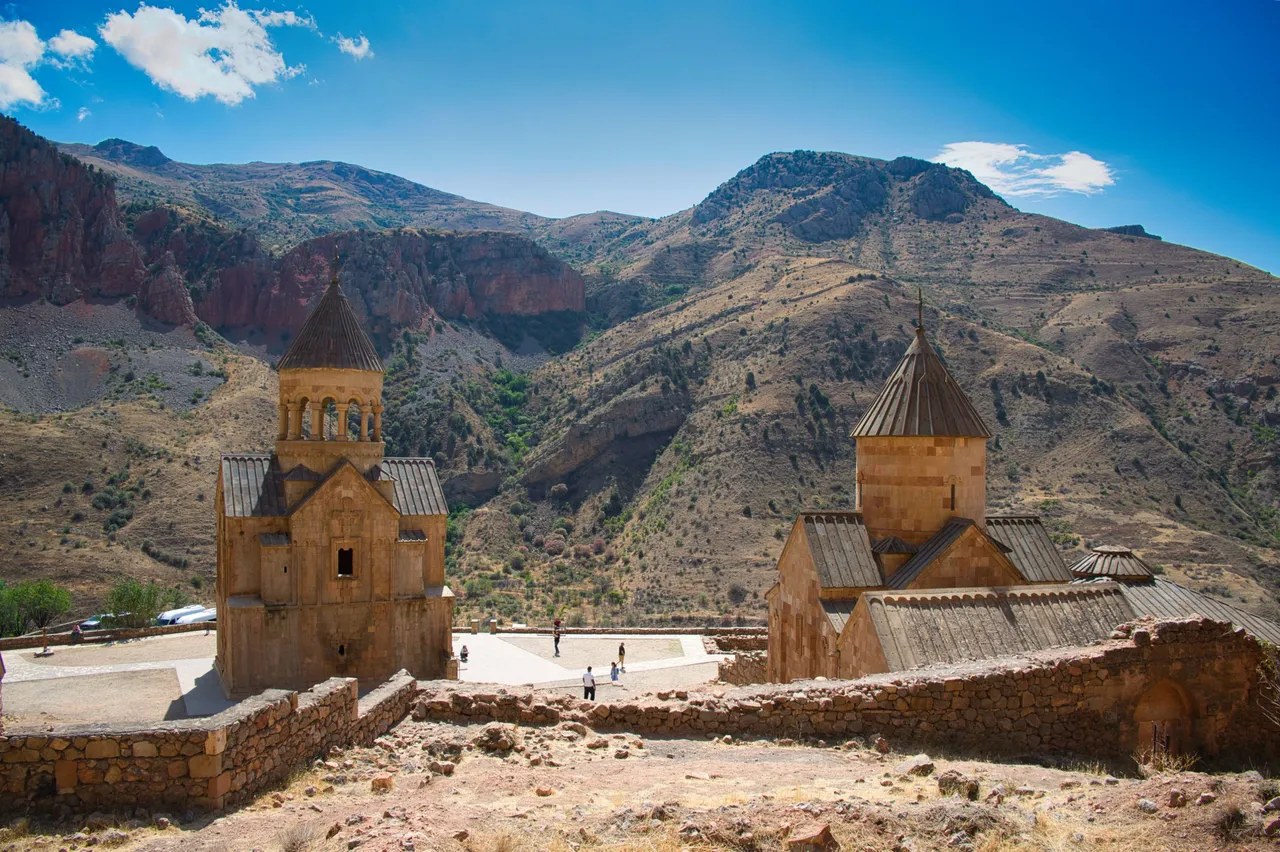

Took my breath away
Orbelian's Caravanserai
Built in the time of Prince Orbelian, he whose bones lie at Noravank, the caravanserai ( I have loved the mysticism of that word since Santana released an album of that name back in '72) gave shelter to weary travellers and their livestock as they traversed the Vardenyats Mountain Pass.
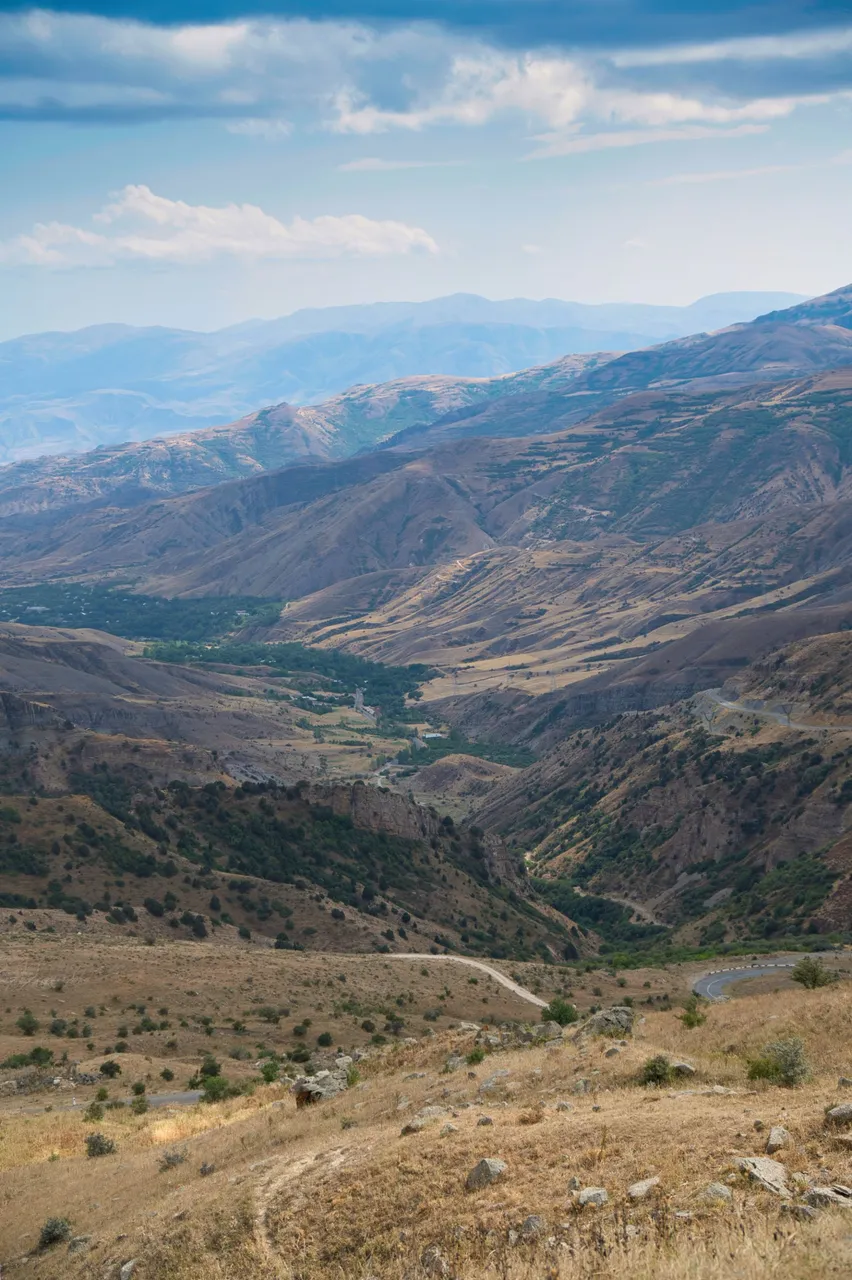

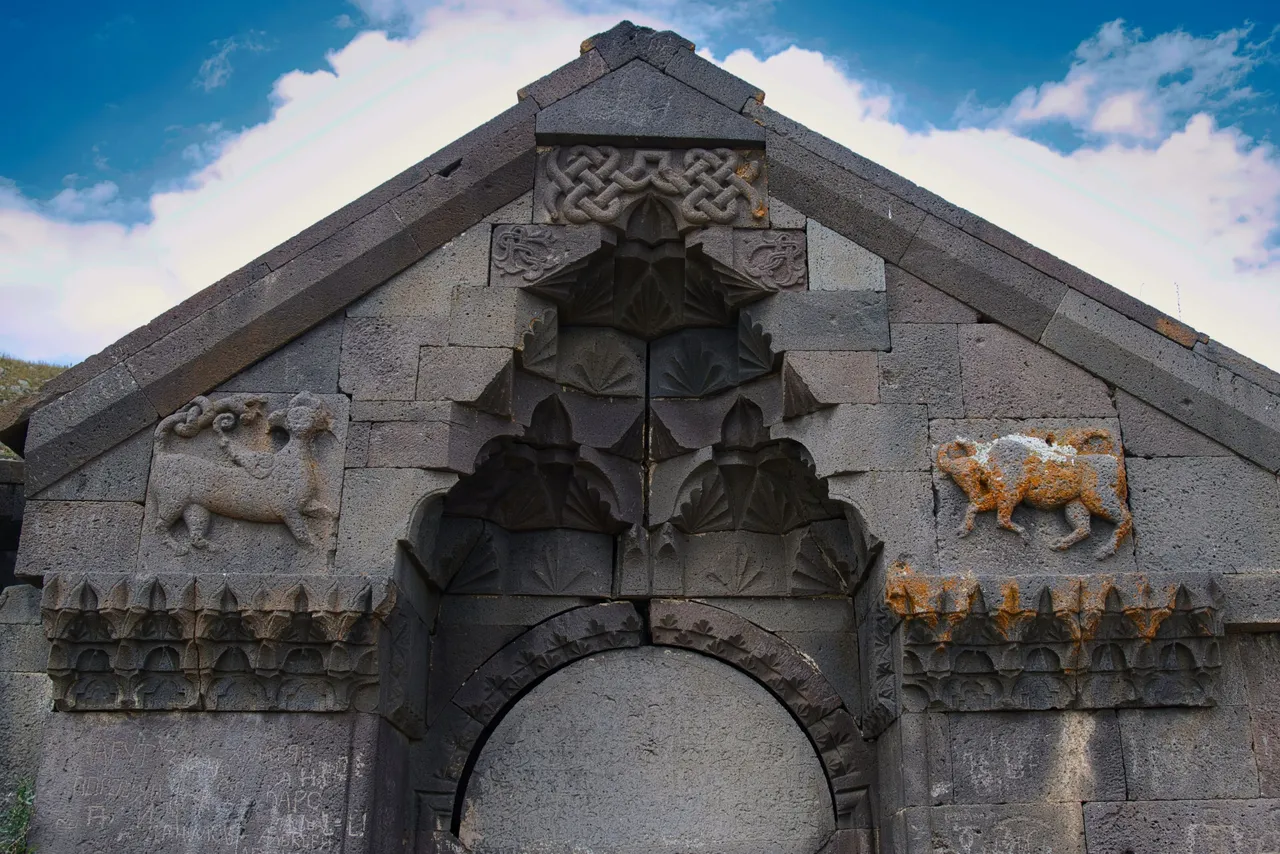
With just a single entrance into a hall with three separate naves the travellers would bed down, with their animals close by in an adjoining nave
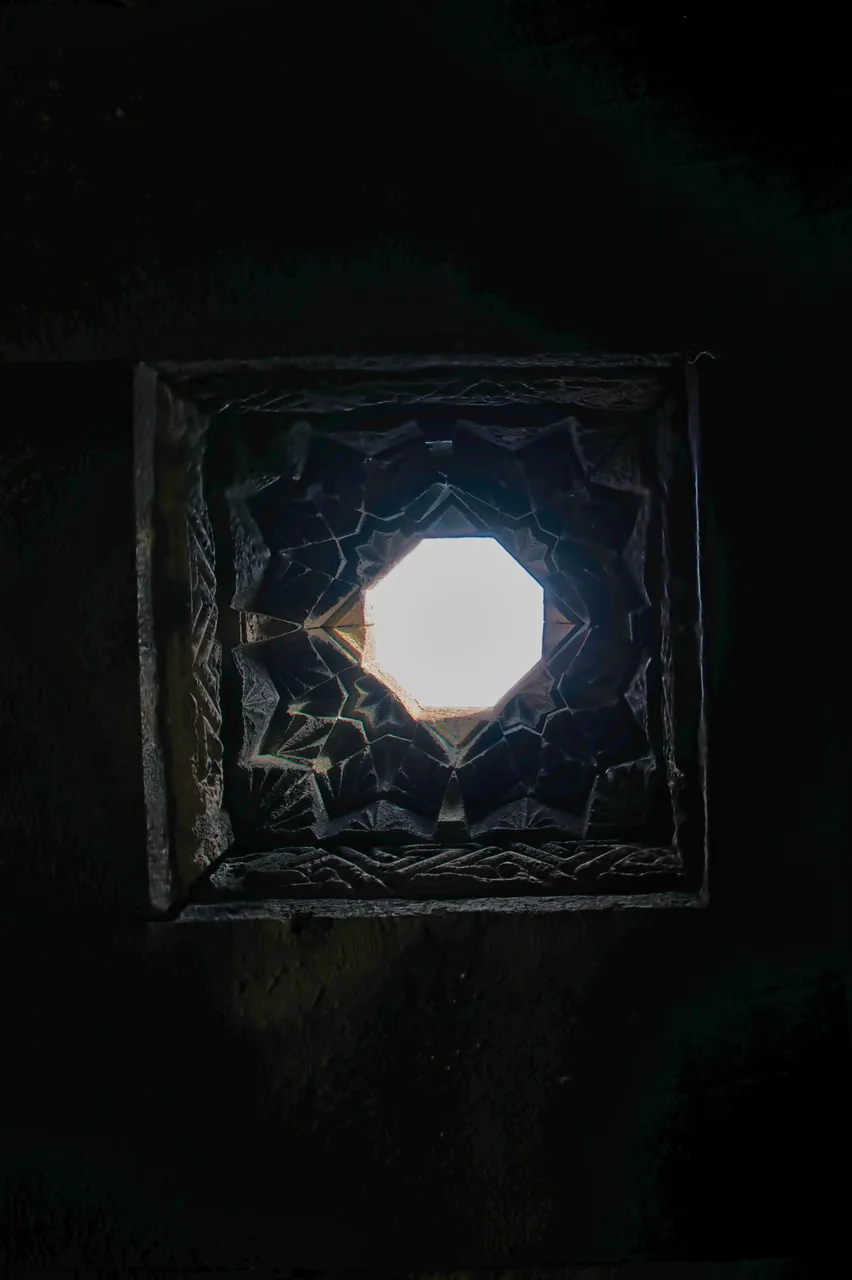
Each nave allowed light in and smoke from fires out via several openings known as an oculus.

Visible under the arches are stone water troughs for use by the animals
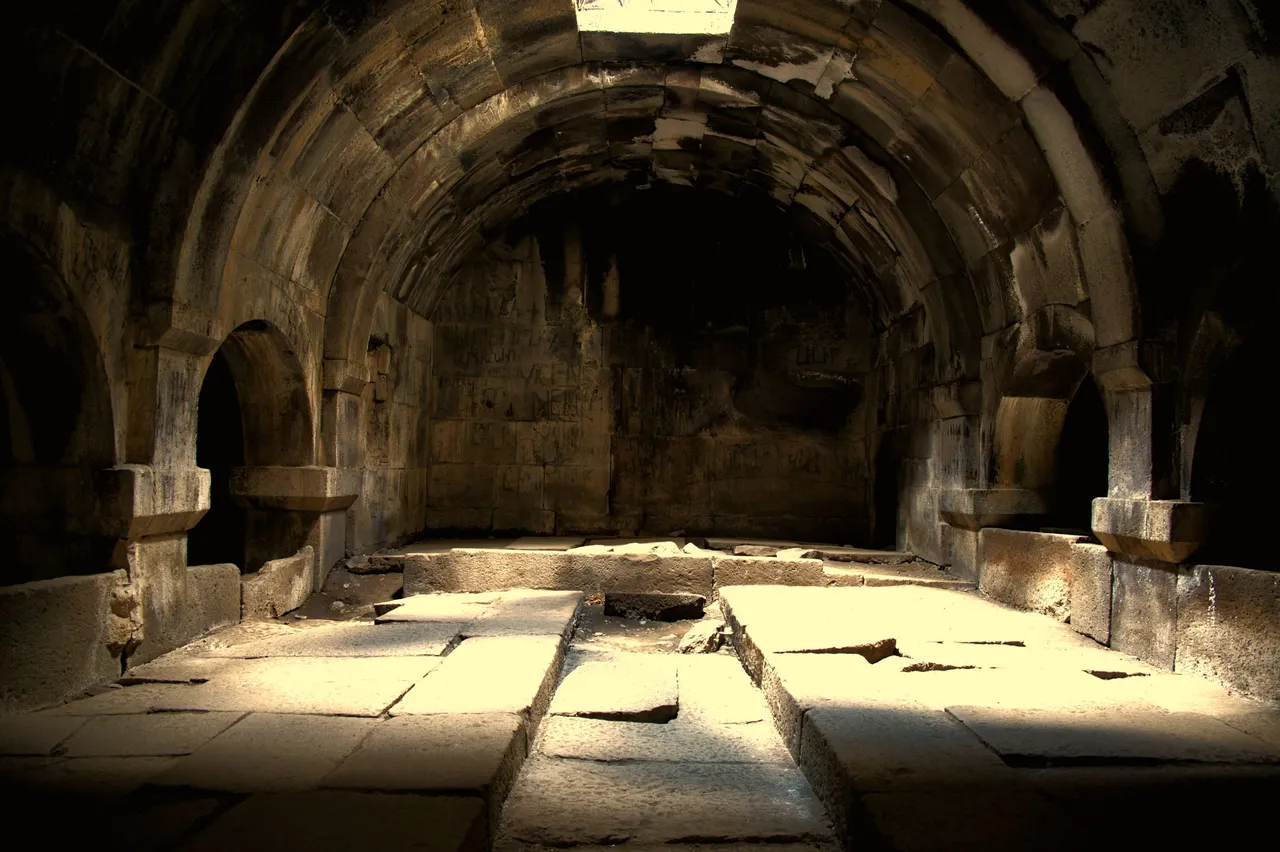
The caravanserai was completely renovated in the late 1950's